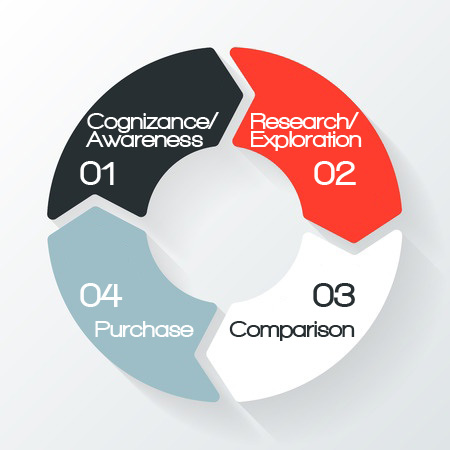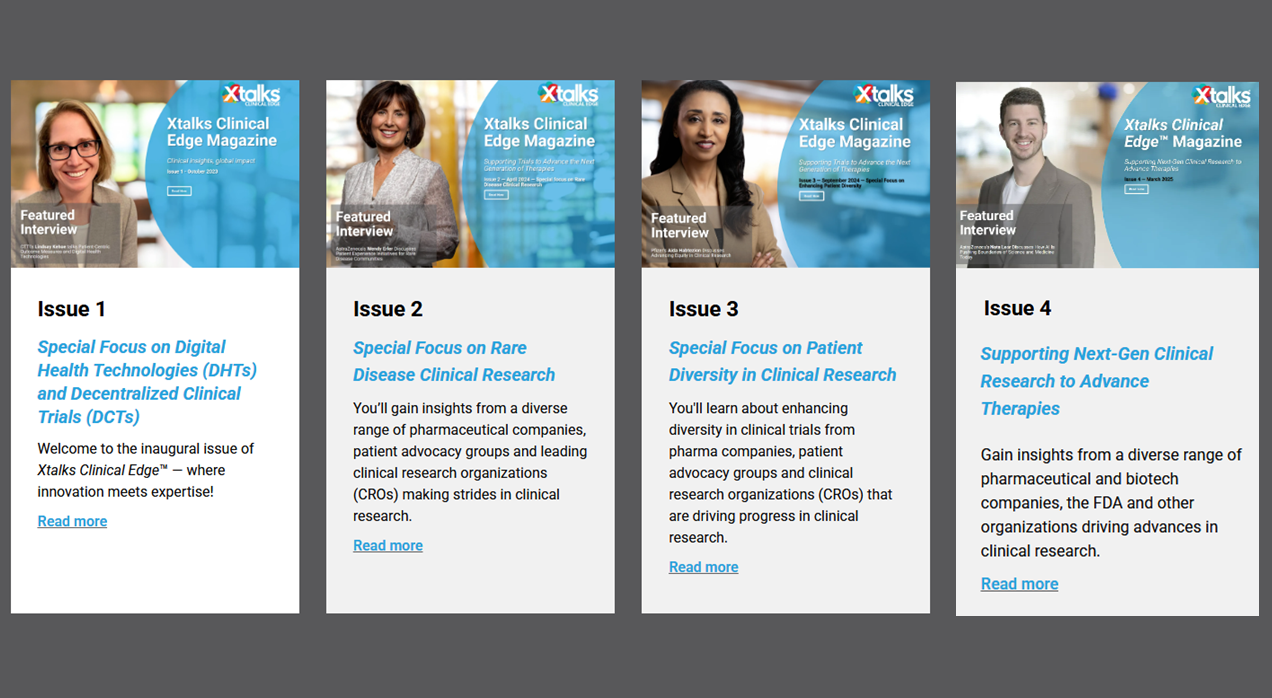As a life science marketer, identifying the buying stage of your prospects is crucial to determining the type of content you should be producing. Although it will vary across prospect groups, you’ll want to steer clear of over-saturating with unrelated content or not having enough of the appropriate type of content available (at the right time) in the sales cycle. Optimally, you’ll want to use your content production (i.e. webinars, whitepapers, and articles) at the right time in the sales cycle to identify and nurture leads while building confidence in your brand.
Overview of the Sales Cycle
Before we dive into the types of webinar content you should be producing for each stage of the sales cycle, you might want to take our quiz, first. In each stage, a prospect is looking to be educated about a different aspect of a specific topic or issue. Being aware of how you’re targeting your webinar content, whether that be to specific sales cycle prospects, or multiple prospects at once, can be an easier way to decide on what types of webinar content to present. While there are many variations on a classic sales cycle, at Xtalks, we break the sales cycle down into four stages.
-
Cognizance/Awareness
-
Research & Exploration
-
Paralleling & Comparison
-
Purchasing
As we’ll detail below, webinars are not only applicable at every stage of the buying cycle, but may be a necessary ingredient in your marketing mix. Now, Let’s look in detail about the types of content you should be presenting in your webinars at each stage of the buying cycle.
Mapping Webinar Content to Stages of the Sales Cycle
1. Cognizance/Awareness
In the cognizance/awareness stage of the sales cycle, potential customers may be introduced to a specific problem, hurdle, initial question or worst-case scenario for a specific subject. Using webinars to identify these needs to potential viewers will give you the biggest opportunity to draw brand presence. Your attendees may wish to learn about industry trends, standards, industry developments and perspectives. In general, webinar attendees are looking to be educated on a specific topic and will wish to investigate that issue in detail, but as a presenter, you should aim to provide a smaller amount of problem-solution based content. If you present successfully to this stage in the buying cycle, you’ll be able to align your company with a prospect’s interests, and have that prospect look to your company when they wish to be further educated about that topic.
In short, what do I present at this cognizance/awareness stage of the sales cycle?
- Problems
- Hurdles
- Initial questions
- Worst-case scenarios
- Industry trends
- Standards
- Developments
- Perspectives
2. Research & Exploration
Perhaps during the first of your series of webinars you’ve optimized a poll question, and found that a core group of your attendees are ready for the research and exploration phase of the sales cycle. In this stage, prospects may have identified a need (as declared in your cognizance/awareness webinars), but don’t have a direction to pursue for a solution to their problem. At this point, you’ll want to include information that introduces challenges, as well as a focus on problem solving, describing benefits, pitfalls, and client stories. If you present successfully to this stage in the buying cycle, you’ll be identifying your brand with the core needs and solutions to the issue and aligning yourself with your newly acquired prospect base.
In short, what do I present at this research and exploration of the sales cycle?
- Challenges
- Benefits
- Pitfalls
- Solutions
- Client stories
3. Comparison
Your prospect base in this stage of the sales cycle is narrowing down their options for a solution to their problem and are likely aware of your competitors. Here, webinar attendees will need to know specific details about methods, optimizations, features, details about the product or service, and how your product may integrate with your prospect’s workflow. If you’re presenting to prospects at this stage of the sales cycle, you’ll need to keep in mind that you’re presenting a webinar (not a brochure), so your webinar needs to educate, and shouldn’t be aggressively sales-oriented. Presenting a case-study is a fantastic way to concomitantly educate your audience, while presenting the type of data that prospects need at this stage. Including webinar handouts during this stage can be very helpful for this prospect’s data acquisition phase.
In short, what do I present at this comparison stage of the sales cycle?
Within case studies & handouts (pdfs, whitepapers, etc):
- Methods
- Optimizations
- Features
- Specific details
4. Purchase
In this stage of the sales cycle, your webinar content should be complementing data from your sales team. Including additional case studies describing the differences between the workflow of clients A vs. B may help to solidify your prospect’s decision. Here, you may discuss complex issues, competitive advantages, and field a longer Q&A session (until now you may not know which data is most critical to address). Like the comparison stage of the sales cycle, using Xtalks’ handouts feature within the webinar can be essential. Provide optional downloads for guides, comparative charts, white papers and more.
In short, what do I present at this purchase stage of the sales cycle?
- Case studies
- Competitive advantages
- A longer Q&A session Handouts (pdfs, whitepapers, etc.)
I Have a Better Understanding Of How to Map my Webinar Content. Now What?
Now, hopefully you’re better equipped to move forward with an idea for the type of general content for your webinar or webinar series. Are you still unsure of what type of content you should be producing for each stage of the sales cycle? Why not take our quiz? I’d suggest constructing buyer personas to work in partnership with your sales cycle . For a more detailed discussion of specific life science content choices, webinar optimizations, and marketing reach with Xtalks sponsorship opportunities, make sure to contact Xtalks.com.
Do you have insight into mapping sales cycle content? Let us know your thoughts comments section below.












Join or login to leave a comment
JOIN LOGIN